Categories: Featured Articles » Sources of light
Number of views: 9950
Comments on the article: 0
How to find out the power of an LED strip
For the organization of outdoor and indoor lighting, especially to create a variety of local highlights of interior areas, they are increasingly resorting to the use of led strip.
LED strips are universal, compared to lamps they are inexpensive, compared to fluorescent lamps - they are very energy-efficient, and besides, they are very easy to install - all this explains the growing popularity of LED strips among a wide range of consumers.
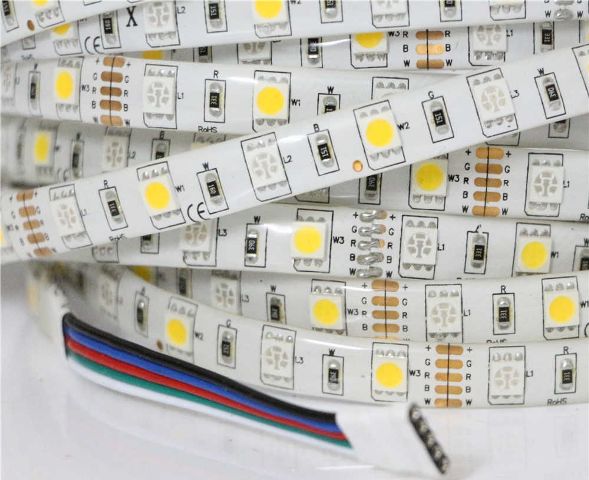
Due to the relevance of this topic, let's talk about the parameters of LED strips, how to find out and calculate the power of the tape and what you should look for when choosing an LED strip for your needs.
A typical LED strip is a kind of flexible printed circuit board with SMD LEDs mounted on it in a certain order on one side, and with conductive tracks on the back. These tapes are issued on a direct voltage of 5, 12, 24 or 36 volts. The tape protection class can be from IP20 (the most open and unprotected) to IP68 (completely waterproof, clad in a silicone tube).
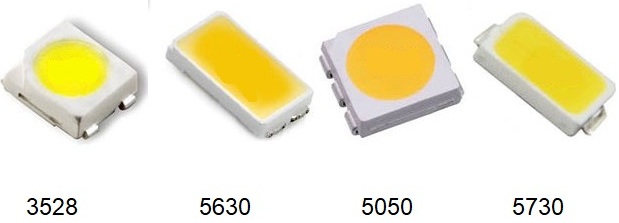
The most popular SMD LEDs used on such tapes are: SMD3528, SMD5050, SMD5630 and SMD5730. The numbers in the LED marking indicate the overall dimensions of the LEDs in millimeters, for example, the SMD5630 LED has a length of 5.6 mm and a width of 3.0 mm.
The LED strips themselves on the reels themselves are marked like this: 24W 12V 2A - these are characteristic parameters, for example, 5 meters of tape with a consumption of 4.8 W per meter, it can be a tape with 60 SMD3528 LEDs per meter. We will describe in more detail about the types of LEDs below.
Here are the powers of the most popular LEDs that are found on tapes:
-
SMD3528 - 0.11 W;
-
SMD5050 - 0.3 W;
-
SMD5630 - 0.5 W;
-
SMD5730 - 0.5 watts.
The smallest of the listed SMD LEDs used in the manufacture of tapes is SMD3528having dimensions of 3.5 by 2.8 mm and a rated power of 0.1 watts. This is a single chip LED. Tapes collected from these diodes are cheap and particularly versatile: usually the voltage of the tape is 12 V. Such tapes are popular in the decoration of ceilings and various interior niches.
A single ribbon circuit contains three SMD3528 LEDs and one current limiting resistor. There are many such parallel-connected chains on the tape; they can be cut as many as needed. Due to the presence of a current-limiting resistor, one LED strip already has an average of not 0.1 W, but 0.08 W with a supply voltage of 12 V.
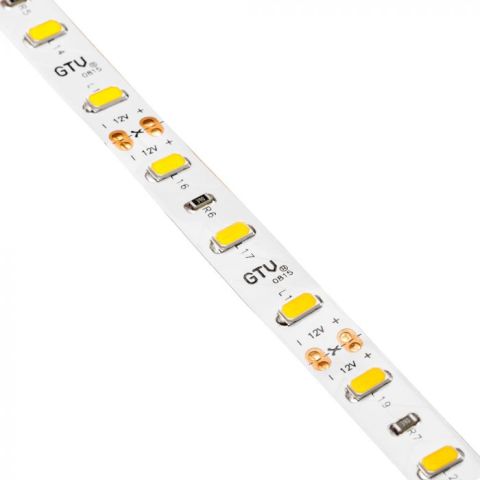
Tapes are produced with different densities of LEDs per meter section of tape, usually a multiple of 30 or 60: 30, 60, 120, 180 and 240 LEDs per meter. Thus, the power of a piece of tape of a certain length can be found out simply by counting the LEDs on the piece. Moreover, the tape should be cut strictly according to special marks applied to the front side of the tape.
One meter of tape with 60 SMD3528 LEDs per meter will have a power of 4.8 W; accordingly 120 LEDs per meter - 9.6 W; 180 - 14.4 W: 240 - 19.2 W per meter. If you need less or more, a piece is cut off according to detachable marks and then the power will change proportionally: half a meter - 2.4 W, one and a half meters - 7.2 W (60 LEDs per meter), etc.
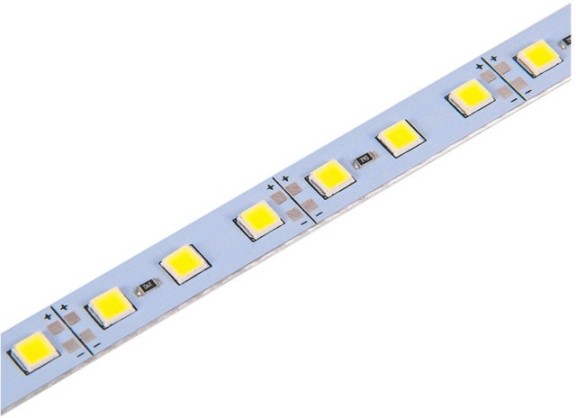
LED tapes SMD5050 three times more powerful than tapes on SMD3528 diodes, because in one SMD element there are three light-emitting crystals, such as in one SMD3528. These tapes are well suited for the construction of lighting systems for desktops, ceilings and doorways, and this size is also popular in the illumination of car interiors.
It is noteworthy that LED strips with diodes of a standard size SMD5050 are also tri-color. Here 1 meter with 30 LEDs per meter will consume 7.2 W, and with 60 and 120 LEDs per meter - 14.4 and 28.8 W, respectively. The cut in half a meter is 3.6 watts.
Obviously, power is proportional to length.It should be cut only by marks, otherwise one of the parallel chains with a resistor will be broken and you will have unused LEDs on the tape. The higher the supply voltage of the tape (according to the documentation) - the longer the single LED circuit that cannot be broken by cutting.
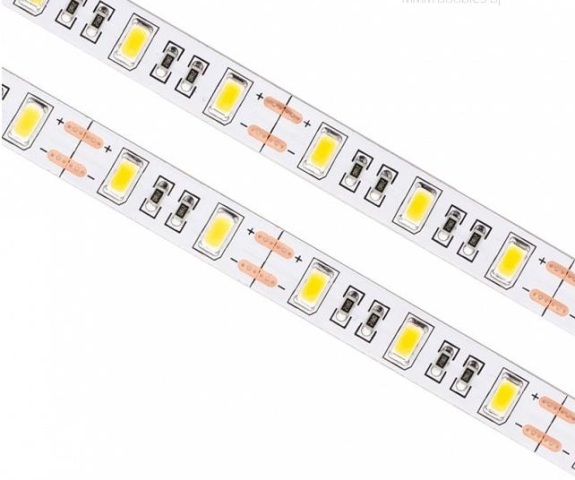
Next in size are SMD5730 and SMD5630, each LED at 0.5 watts. From the tapes on these LEDs, you can build full-fledged lighting. 30 LEDs per meter of such a tape will consume 15 watts, and 60 per meter - all 30 watts. If you need 3 meters of tape with SMD5630 diodes with a diode density of 60 elements per meter, you need a stabilized 90 W power supply.
Types, characteristics, marking of SMD LEDs
RGB LEDs: how they work, internal device, how to connect, RGB-led and Arduino
How to calculate and choose a power supply for a 12V LED strip
See also at i.electricianexp.com
:
